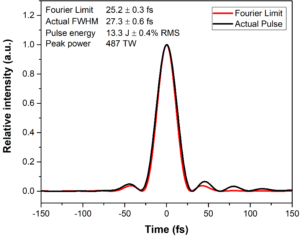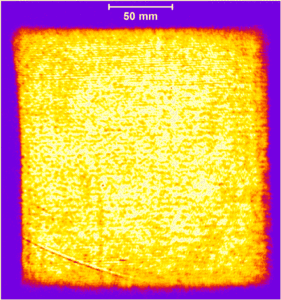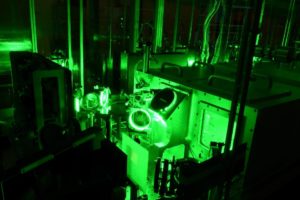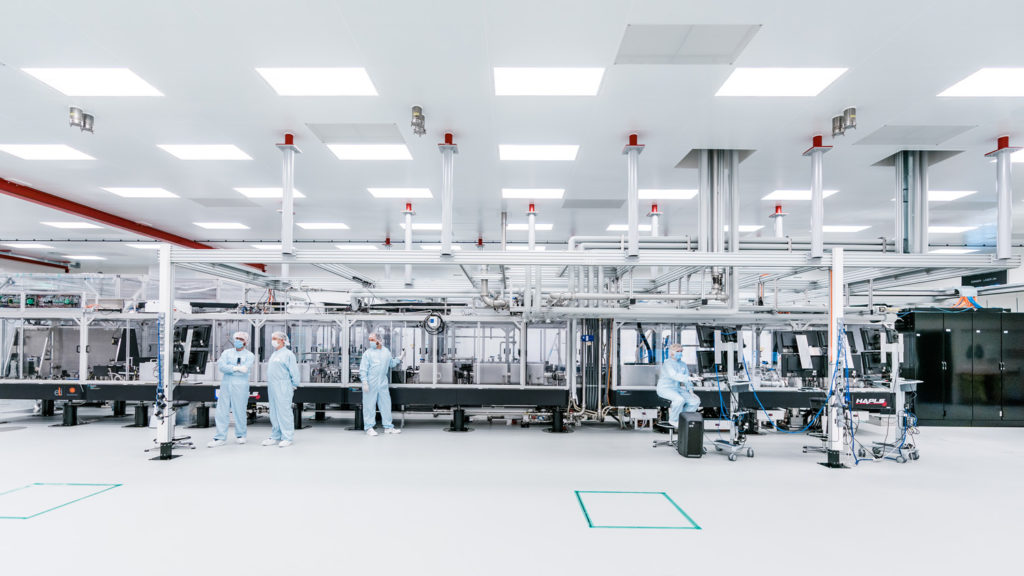Operation of the L3-HAPLS laser system (ELI Beamlines Research Centre) at 0.5 PW level was demonstrated through compression of the full energy output pulses currently generated by the laser chain, in the Petawatt vacuum compressor. The L3-HAPLS is a system designed for sustained operation with repetition rate 10 Hz.
In the demonstration run, the L3-HAPLS pump laser was operated at 101 J energy, driving the high-power Ti:sapphire short-pulse amplifier and resulting in 17.7 J of pulse energy at the output of the chain, before entering the vacuum pulse compressor. The energy of the generated output pulses was highly stable with only 0.4% fluctuations. The long-term sustained performance of the laser at high-repetition rate was verified previously without the Petawatt vacuum compressor, demonstrating that the laser is stable during continuous operation of longer than one hour. By accounting for reflectivity of the compressor gratings, compressed pulses with 13.3 J of energy were generated, with duration of 27.3 fs. This corresponds to peak power of about 490 TW, or 0.49 PW. Together with a 3.3 Hz repetition rate and pulse duration of <30 fs, this is the highest laser peak power ever demonstrated.


Figure 1: Temporal shape of the L3-HAPLS pulse compressed to 27.3 fs (left), and the laser beam at the ouptut ofthe vacuum compressor (right).
“The L3-HAPLS laser team worked hard during the last year to overcome several operational challenges and to get ready for commissioning experimental campaigns planned for the second half of this year. Finishing these campaigns successfully will be a key step towards opening the high power experimental stations to the user community,” says Josef Cupal, the leader of L3-HAPLS.
The ramping of energy of the full system through the compressor to the 0.5 PW level was done gradually in about 30 steps. After the run, a thorough visual inspection of the diffraction gratings and other optical components inside the compressor was made. No problems were found and the L3-HAPLS system is now ready to start sending the short-pulse high-power beam to the experimental halls.

Figure 2: High-power short-pulse Ti:sapphire Beta amplifier of L3-HAPLS
The L3-HAPLS laser system represents a new generation of diode-pumped, high-energy and high-peak-power laser systems. The laser will serve in many areas of basic and applied research. Its most significant applications include compact laser particle accelerator for new medical methods and short-wave X-ray generation for high resolution spatial and temporal resolution microscopy for material and medical research. The initial experiments will be focused on Plasma Physics and Ion Acceleration.
L3-HAPLS was designed, developed and constructed by Lawrence Livermore National Laboratory and delivered to ELI Beamlines in June 2017.
A wide coalition of industrial partners was invited to develop the L3-HAPLS laser. This cooperation has enabled a number of technological innovations. The L3-HAPLS laser system uses the world’s most powerful pulsed laser diodes. This effort was awarded by R&D 100 award in 2015.

Figure 3: The L3-HAPLS laser system
Interesting Links:
Pioneering the petawatt regime at ELI Beamlines
Lucia Koubíková, a laser scientist working in L3 laser hall at ELI Beamlines, published an article about the HAPLS laser system in LaserFocusWorld.
ELI video – L3 HAPLS laser video
Video – L3 HAPLS arrival
P3 chamber – L3 shoots in P3 chamber







